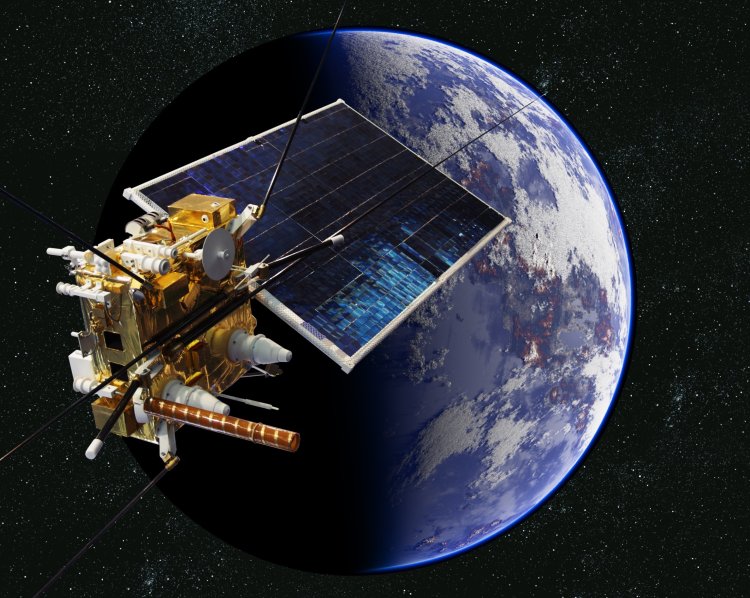Exploring the Sun in different ranges, determining the composition of the solar wind, exploring interplanetary space, photographs of Mars and its moons: 33 years ago, Phobos 2 station was launched
On July, 1988, at 8 p.m. Moscow Time, the interplanetary space station Phobos 2 took off from the Baikonur. The probe was launched to complete something entirely new in the world practice of space travel – to follow a celestial body with a weak gravitational field and hover over some of its surface parts with subsequent maneuvering.
The spacecraft actually started the scientific program while approaching Mars. It envisaged investigating the composition of the interplanetary and circumplanetary plasma, determining the composition of the solar wind, investigating Mars magnetosphere and its interaction with the solar wind, detecting solar flares, and investigating solar oscillations. Moreover, the spacecraft was to photograph Mars and its moon Phobos, determine physical and chemical properties of Phobos, examine its inner structure, and land on it.
The first part of the mission was completed successfully. The probe sent to Earth data of photometric, spectral and radiometric tests and measurements, and photographs of Mars and it moon. 57 days of travel around Mars provided data on thermal characteristic of Phobos, the plasma surroundings of Mars, and its interactions with the solar wind. The data on the size of the flow of oxygen ions “flying out” via the atmosphere of Mars made it possible to measure the speed of erosion of the atmosphere caused by interactions with the solar wind.
An encounter with Phobos and the release of two landers were planned for April 4 and 5. On March 27, the battery recharge command was not executed, and there was no contact with the spacecraft. Four hours later, Earth received a weak signal, which only made it clear that the probe was rotating chaotically. That signal was the last message from Phobos 2; all further attempts to establish communication with it failed.
Phobos 1, the predecessor of Phobos 2, was launched towards Mars days before the departure of Phobos 2. There were 39 communication sessions in July and August, but in early September contact with the probe was lost due to operator’s error. Due to program malfunction, a command to deactivate the pneumo-system of orientation and stabilization engines of the probe was sent instead of the command to activate the gamma spectrometer. The spacecraft with the deactivated orientation systems stopped turning the solar batteries towards to Sun, and the batteries went dead.
The subsequent missions Mars 96 and Phobos Grunt were also unsuccessful. Both stations failed to leave the circumterrestrial space: the former fell apart entering the Earth atmosphere 5 hours after the launch, while Phobos-Grunt remained in the circumterrestrial orbit and burned down in the atmosphere.
Photo: mechanik / ru.123rf.com
Based on Wikipedia and Roscosmos






















